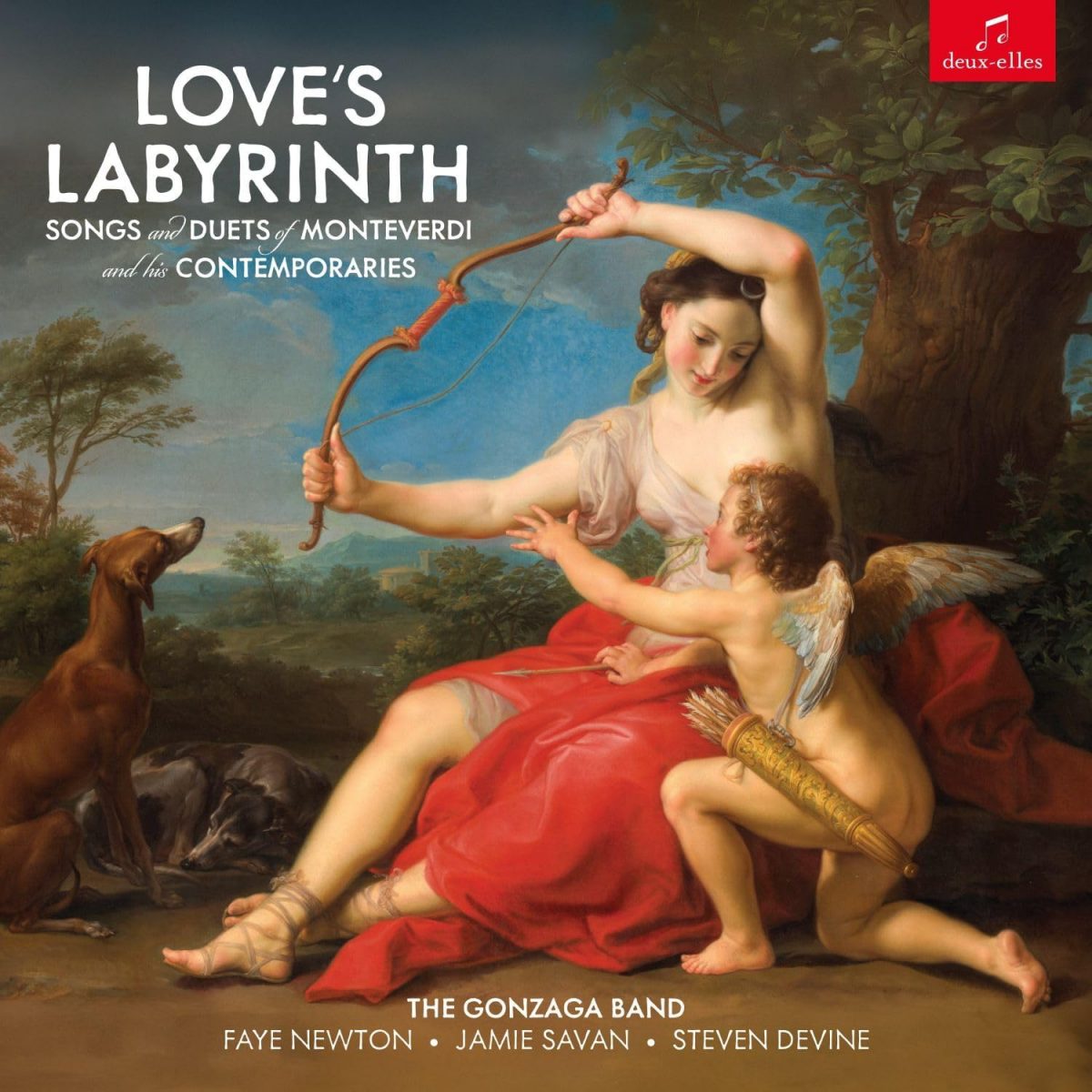Songs and Duets of Monteverdi and his Contemporaries
The Gonzaga Band (Faye Newton, Jamie Savan, Steven Devine)
deux-elles DXL1213
65:45
With the five-star artists of Jamie Savan’s Gonzaga Band, we know that the artistry of the players, their long history of working together in such small-scale projects and Savan’s meticulous scholarship in editing material will produce a programme that offers fine music in captivating performances.
To appreciate the interlaced threads that make up such a well-researched programme, you need to read Savan’s liner notes: these ten columns are a model for how to coax listeners into believing that they understand the nuances behind the choice of some obscure treasures, and to believe that we have been party to the way in which these pearls have been selected and strung together.
They perform this programme at A=440, and the keyboard instruments are tuned in ¼ comma mean tone. They include a harpsichord by Dennis Woolley after an original by Hieronymus Bononiensis (Rome 1521) in the V & A, a single-strung harpsichord by Colin Booth after a 1533 instrument by Domenico da Pesaro in Leipzig and an ottavino of his after a 17th-century original in the Kunsthistorisches Museum in Vienna. The organ is a digitally sampled keyboard after the Goetze and Gwynne St Teilo Tudor Organ.
Faye Newton has a beguiling voice: clear as a bell, yet delivered with a technical mastery that makes her the ideal singer for this Italian repertoire that spans the cusp of the 16th to 17th centuries. Her neat Italian diction coveys the changing emotions of the poems perfectly and the choice and arrangement of material, ranging from solo songs through duets to four- and five-voice madrigals, explores every possible combination of instruments, and, as with the Gonzaga Band’s other programmes, we are left marvelling at how so much rich music can be contrived with such minimal resources. As Savan’s note suggests, ‘If Monteverdi’s five-voice madrigals were performed in the context of the musica secreta in the 1590s, with its emphasis on female vocal virtuosity, they would likely have been so in some kind of arrangement for upper voices with keyboards, as exemplified by Luzzaschi.’
This is a delightful programme, and a very good introduction to the power of song as it was being rediscovered in those formative years for modern music.
David Stancliffe
